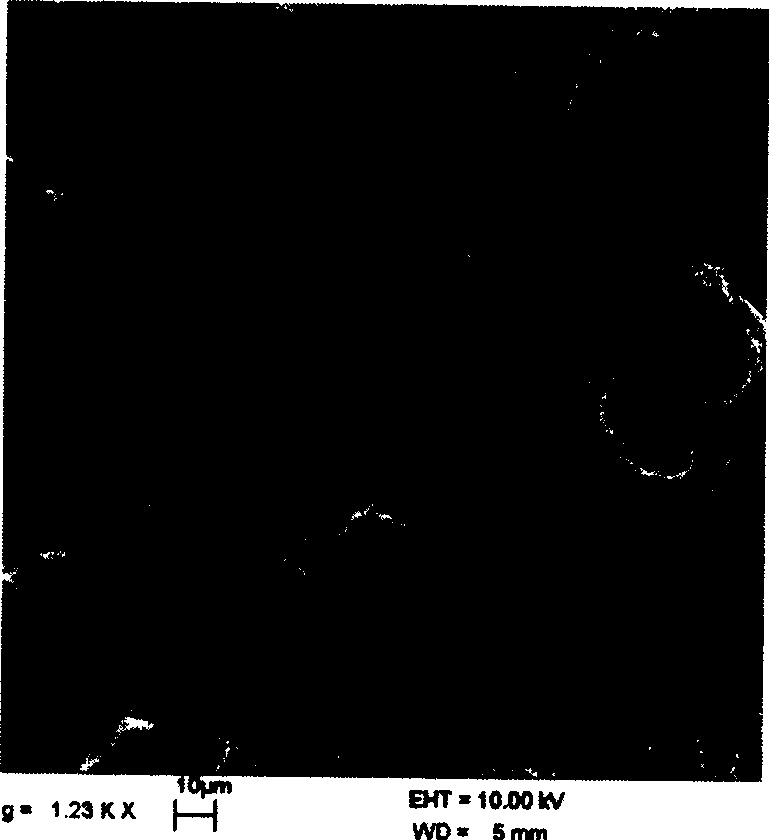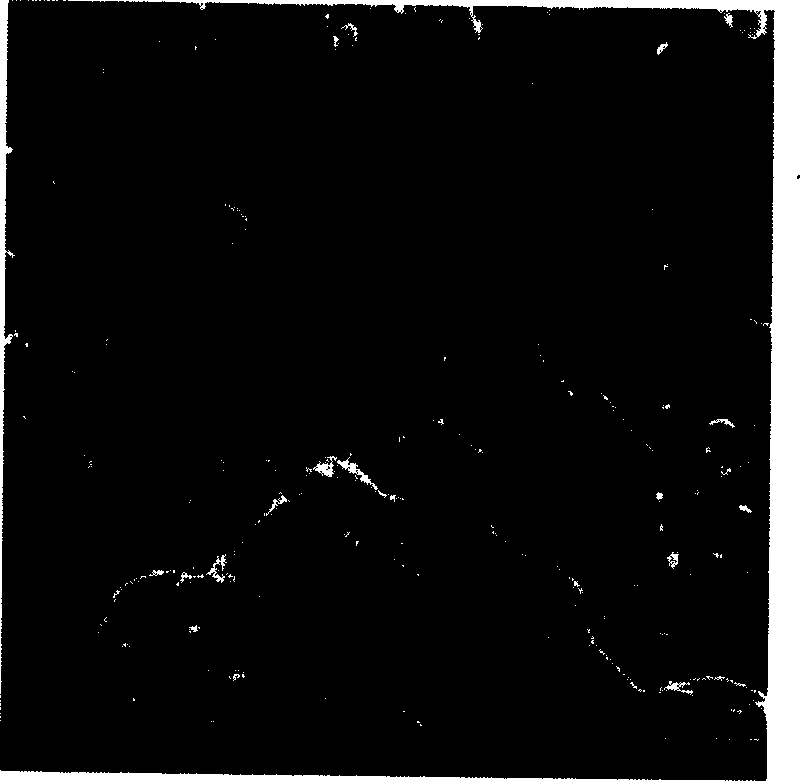Conducting fiber containing nano car bon tube and its prepn. method
A technology of conductive fibers and carbon nanotubes, applied in the direction of conductive/antistatic filament manufacturing, single-component polyester artificial filaments, etc., can solve the problem of large aspect ratio and specific surface area of carbon nanotubes, carbon nanotube active groups There are few clusters and damage to the structure of carbon nanotubes, etc., to achieve good mechanical properties and molding processability, easy blending and spinning processes, and enhanced interaction effects
- Summary
- Abstract
- Description
- Claims
- Application Information
AI Technical Summary
Problems solved by technology
Method used
Image
Examples
Embodiment 1
[0034] 99.9 parts of polyethylene terephthalate with an average particle diameter of 2 mm after vacuum drying, 0.05 parts of single-walled carbon nanotubes with an outer diameter of 2 to 30 nm and a length of 1 to 50 μm, and 0.05 parts of OP wax , into the high-speed mixer, the mixing temperature is controlled at 80-100 ° C, to make it evenly mixed. The mixture is then added to a twin-screw extruder, the screw speed is controlled at 60 rpm, and the extrusion temperature is controlled at 230-260° C., and the conductive masterbatch is obtained after extruding and pelletizing with a pelletizer. Dry the masterbatch in a vacuum oven, and then use a common spinning machine to make conductive fibers through conventional spinning and drawing processes. The carbon nanotube content of this conductive fiber is 0.05%, and the volume resistivity is 2×10 10Ω·cm.
Embodiment 2
[0036] 68.2 parts of polyethylene terephthalate and 28.8 parts of polytrimethylene terephthalate with an average particle diameter of 2 mm after vacuum drying, multi-walled carbon nanotubes with an outer diameter of 2 to 30 nm and a length of 1 to 50 μm Add 1 part of carbon nanotubes and 2 parts of OP wax into a high-speed mixer, and control the mixing temperature at 80-100°C to make it evenly mixed. The mixture is then added to a twin-screw extruder, the screw speed is controlled at 60 rpm, and the extrusion temperature is controlled at 230-260° C., and the conductive masterbatch is obtained after extruding and pelletizing with a pelletizer. Dry the masterbatch in a vacuum oven, and then use a common spinning machine to make conductive fibers through conventional spinning and drawing processes. The carbon nanotube content of this conductive fiber is 1%, and the volume resistivity is 6×10 6 Ω·cm.
Embodiment 3
[0038] 97 parts of polytrimethylene terephthalate with an average particle diameter of 80 μm after vacuum drying, 1 part each of single-walled carbon nanotubes and multi-walled carbon nanotubes with an outer diameter of 2 to 30 nm and a length of 1 to 100 μm , 1 part of montan wax is added to a high-speed mixer, and the mixing temperature is controlled at 80-100°C to make it evenly mixed. The mixture is then added to a twin-screw extruder, the screw speed is controlled at 40 rpm, and the extrusion temperature is controlled at 230-260° C., and the conductive masterbatch is obtained after extruding and pelletizing with a pelletizer. Dry the masterbatch in a vacuum oven, and then use a common spinning machine to make conductive fibers through conventional spinning and drawing processes. The carbon nanotube content of this conductive fiber is 2%, and the volume resistivity is 4×10 2 Ω·cm.
PUM
| Property | Measurement | Unit |
|---|---|---|
| Outer diameter | aaaaa | aaaaa |
| Length | aaaaa | aaaaa |
| The average particle size | aaaaa | aaaaa |
Abstract
Description
Claims
Application Information
 Login to View More
Login to View More - R&D
- Intellectual Property
- Life Sciences
- Materials
- Tech Scout
- Unparalleled Data Quality
- Higher Quality Content
- 60% Fewer Hallucinations
Browse by: Latest US Patents, China's latest patents, Technical Efficacy Thesaurus, Application Domain, Technology Topic, Popular Technical Reports.
© 2025 PatSnap. All rights reserved.Legal|Privacy policy|Modern Slavery Act Transparency Statement|Sitemap|About US| Contact US: help@patsnap.com



